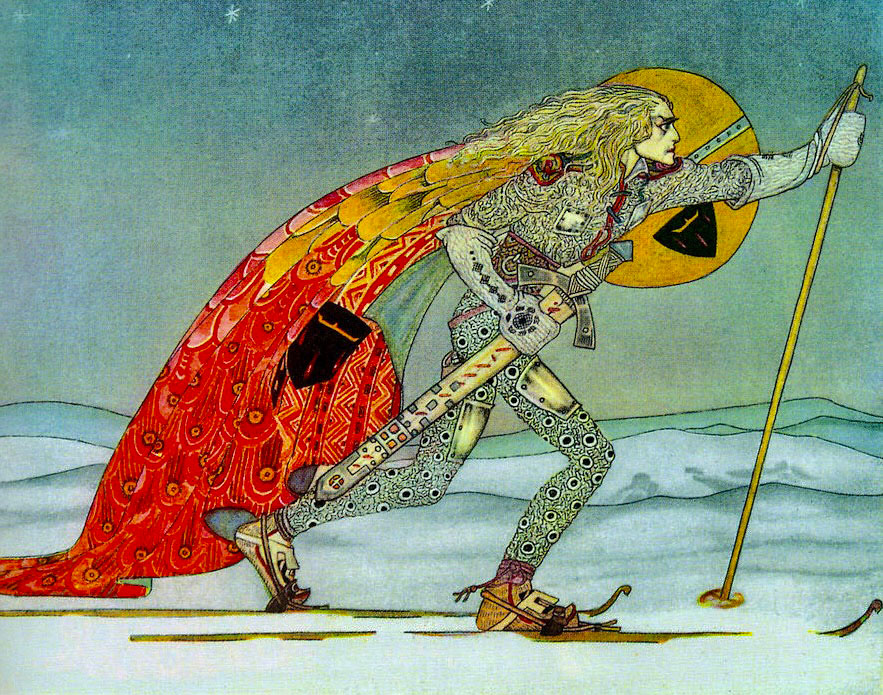In 1936, Danish illustrator and theatrical designer Kay Nielsen moved to a home on Marigold Street in Altadena with his wife, Ulla. He found work at the Disney Studio where he designed art for the Night on Bald Mountain sequence in Fantasia, and subsequently for Snow White and The Little Mermaid (for which he was credited 50 years later when that film was finally made).
Nielsen drew exquisite lines, and his images often included generous empty spaces that contrasted with fields of intricate pattern. The heroes and princesses he depicted are clearly beings from a magical age, and picture elements are arranged on the page to create extreme dramatic effect, something he probably derived from his experience creating theatrical sets and costumes. In fact, his theatrical and illustration work continued in tandem through the 1920s.
Nielsen was Born in Copenhagen in 1886 to a prominent artistic family – his parents were actors and directors at Copenhagen’s Royal Danish Theater.
Nielsen studied in Paris from 1904 to 1911, followed by several years in England. There he gained commissions to illustrate high-quality “gift books” of fairy tales using a recently developed four-color printing process. Nielsen’s illustrations for Sleeping Beauty, Puss in Boots, Cinderella and Bluebeard were published in 1913 Christmas Edition to great success. His most famous work is East of the Sun and West of the Moon,
Tales from the Far North. His career flourished internationally with commissions for illustration, theatrical set and costume design, and a one man show in New York in 1917. He married Ulla (18 years his junior) and they were part of a lively international artistic scene. However, around 1930 work began to dry up. It was the Great Depression and Art Nouveau had become passé. In 1936 he and his wife decamped to Hollywood for work and to a home on Marigold Street in Altadena, where they were befriended by neighbors Hildegarde Flanner, a poet, and her architect husband Frederic Monhoff.
Disney let him go in 1942. It is easy to see why. Fantasia was a financial failure, and Walt turned to producing lighter fare for the modern American family.
Nielsen had gained fame depicting the magical and sinister world of fairy tales; the heavy emotions his images conjure were way too dark for Disney.
Nielsen just couldn’t do cornball. Flanner recounted the last years of the Nielsens’ lives in her book Different Images, Portraits of Remembered People. During the last 15 years of Kay’s life work was sparse; there were at least three mural commissions, and some greeting cards, but he and Ulla experienced a steady decline into poverty. They were worldly, genteel, courteous and proud, and their home was nicely furnished with things they had brought from Denmark. Kay was known as a natty dresser. A heavy smoker all his life, his lungs gave out in 1957. He was 71.
After his death, Ulla tried to place his works with museums and private collections, but found no takers for any of it. Flanner describes her unsealing a wooden box, from which she withdrew plate after gorgeous plate of original art for an edition of The Arabian Nights that was never printed. Kay’s funeral took place before a mural he had painted of the 23rd Psalm at the First Congregational Church of Los Angeles on Commonwealth Avenue. Ulla died a year later.

